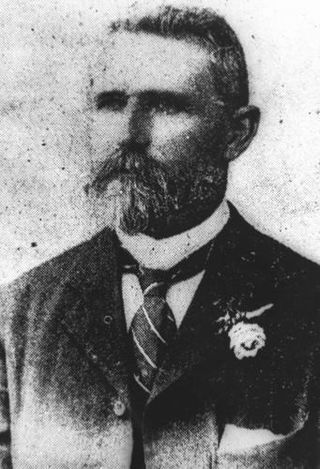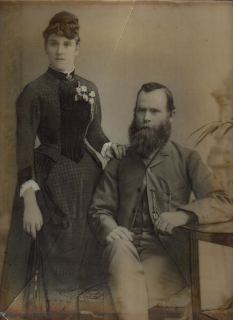
Rinyirru (Lakefield) is a national park in Lakefield, Shire of Cook, Queensland, Australia, 1,707 km northwest of Brisbane and 340 km north-west of Cairns by road, on Cape York Peninsula. At 5,370 km2 - making it bigger than Trinidad and Tobago and almost as big as Brunei - Rinyirru is the second largest park in Queensland and a popular place for fishing and camping.

Laura is a rural town and locality in the Shire of Cook, Queensland, Australia. In the 2021 census, the locality of Laura had a population of 133 people.

Lakeland is a rural town and locality in the Shire of Cook, Queensland, Australia. In the 2021 census, the locality of Lakeland had a population of 333 people.

Coen is a rural town and coastal locality in the Shire of Cook, Queensland, Australia. The town of Coen is inland on the Peninsula Developmental Road, the main road on the Cape York Peninsula in far northern Queensland. In the 2021 census, the locality of Coen had a population of 320.

Maytown was the main township on the Palmer River Goldfields in Far North Queensland, Australia. It is now a ghost town within locality of Palmer in the Shire of Cook, having been active from c. 1874 to the 1920s. It was added to the Queensland Heritage Register on 1 June 2004.

The Palmer River is a river in Far North Queensland, Australia. The area surrounding the river was the site of a gold rush in the late 19th century which started in 1873.

William Aplin was an Australian pioneer, businessman and politician of Queensland, Australia in the 19th century.

Cooktown is a coastal town and locality in the Shire of Cook, Queensland, Australia. Cooktown is at the mouth of the Endeavour River, on Cape York Peninsula in Far North Queensland where James Cook beached his ship, the Endeavour, for repairs in 1770. Both the town and Mount Cook which rises up behind the town were named after James Cook.

Cristofero Palmerston Carandini or Christopher "Christie" Palmerston was an Australian explorer and prospector in North Queensland. He led several expeditions during the last quarter of the 19th century including the discovery of a route along the Mowbray River, which eventually led to the founding of Port Douglas.

Alexander Douglas Douglas was a naval officer, an inspector in the Native Police and a chief inspector of police in Queensland.

William Lakeland was an Australian explorer and prospector in the late 19th and early 20th century.

Alley Family Graves is a heritage-listed cemetery at Gillies Highway, Gordonvale, Cairns Region, Queensland, Australia. It was built from 1887 to 1977. It was added to the Queensland Heritage Register on 23 August 1999.

Cooktown Cemetery is a heritage-listed cemetery at Charlotte Street, Cooktown, Shire of Cook, Queensland, Australia. It was built from 1874 to 1920. It was added to the Queensland Heritage Register on 8 April 1997.

Cooktown Powder Magazine is a heritage-listed gunpowder magazine at Webber Esplanade, Cooktown, Shire of Cook, Queensland, Australia. It was designed by Francis Drummond Greville Stanley and built from 1875 to 1876 by Henry J Meldrum. It was added to the Queensland Heritage Register on 21 October 1992.

Wairuna Homestead is a heritage-listed homestead at Wairuna Road, Wairuna, Tablelands Region, Queensland, Australia. It was built in 1940s by Harold and Norman Johnston. It is also known as Wairuna Station Homestead and Cemetery. It was added to the Queensland Heritage Register on 9 August 2013.

Anglo Saxon Mine is a heritage-listed mining camp at Groganville, Shire of Mareeba, Queensland, Australia. It was built from 1886 to 1897. It is also known as Groganville Township and Limestone Cemetery. It was added to the Queensland Heritage Register on 3 October 2003.

James Venture Mulligan's Grave is a heritage-listed grave at Bakers Road, Mount Molloy, Shire of Mareeba, Queensland, Australia. It was built in 1907. It is also known as Mount Molloy Cemetery. It was added to the Queensland Heritage Register on 21 October 1992.
Byerstown is an unbounded locality and former gold rush town on the Palmer River, now situated in the broader locality of Palmer, Queensland. It was once a commercial hub for the surrounding goldfields and a stop on the road to the Hodgkinson goldfields further afield.
Butchers Hill is the name of the area where a historic cattle station in Far North Queensland, Australia operated during the late 1800s.
Yacamunda Station is a historic cattle station in North Queensland near Bowen. In 1935 it was one of the largest cattle stations in the state and played a significant part in the growth and development of early Australia. It was later sold in 2007 as a functioning cattle station. Historical references and photos are available for reference.

















